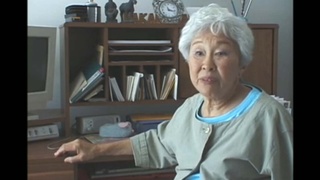Interviews
Dachau prisoners
And their breath was just unbelievable they hadn’t—I’m sure they hadn’t brushed their teeth for years maybe—I didn’t know. And so, when you’re a soldier though, you gotta stand there. And these guys would come up real close, you know. They needed…they needed…not sympathy but they needed closeness to human beings who were good to them. And so…they’d come up and then of course you’d hate to breathe their breath, you know, but so you’d turn to the left and take a breath and then you’d come back, but you can’t back up—soldiers don’t back up, you know. And…those poor people.
Date: February 12, 2013
Location: California, US
Interviewer: Duncan Williams
Contributed by: Watase Media Arts Center, Japanese American National Museum with support of NITTO Tires Life History Project. Courtesy of the USC Hapa Japan Database Project.






